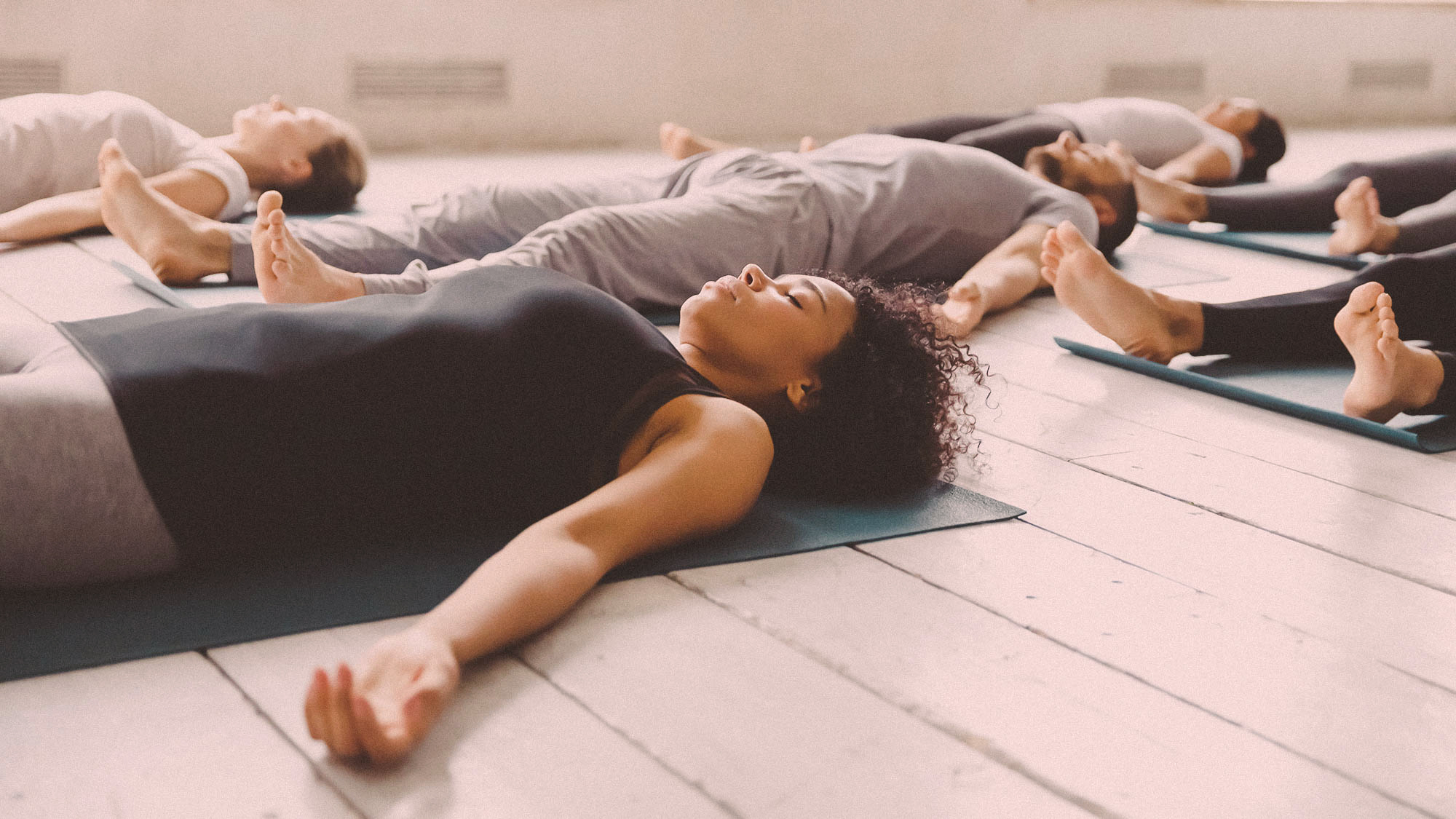I fell in love with Yoga Nidra a few years ago at a retreat/training. While I love psychotherapy, research into somatic therapies has taught us the imperative value of nonverbal therapeutic practices. While the work can’t be done without that introspective mind work in the therapy room, we also need to get out of our heads and into our bodies and into a space where we can let go.
Yoga Nidra, often referred to as “yogic sleep,” is a state of conscious relaxation that brings about deep physical, mental, and emotional relaxation while remaining fully awake and aware. It is a guided meditation technique that aims to induce a state of profound relaxation and rejuvenation.

The practice of Yoga Nidra involves lying down in a comfortable position and listening to a guided meditation led by an instructor or through recorded audio. During the session, you are guided through various stages of relaxation, body awareness, and visualization. The intention is to lead you to a state where you are no longer identified with your thoughts, emotions, or physical sensations, but rather observing them from a detached perspective. From this place, the body accesses a sense of peace and safety, despite our personal challenges still being a reality.
How will Yoga Nidra improve my life?
Yoga Nidra is deeply rooted in yogic philosophy and draws from various traditional yogic practices, such as mindfulness, pranayama (breath control), and meditation. It is said to have a range of benefits, including stress reduction, improved sleep quality, enhanced creativity, increased self-awareness, and relief from anxiety and depression.
Yoga Nidra can also benefit us sexually. By purposely taking ourselves into a more relaxed state, we are more able to allow curiosity, intrigue, and pleasure. Our inhibitors have less power, desire can naturally arise, and we can trust the erotic flow.
What happens in a Yoga Nidra session?
One of the key features of Yoga Nidra is the rotation of awareness through different parts of the body. This practice helps to draw your attention away from the constant stream of thoughts and into the present moment, facilitating relaxation and the release of physical and mental tensions.
Yoga Nidra sessions typically last around 20 to 45 minutes, and participants typically lie down in a quiet, comfortable space where they won’t be disturbed. While it’s often done as a standalone practice, it can also be integrated into a larger yoga practice or used as a tool for relaxation and stress relief.
As with any meditation or relaxation technique, consistency is key to experiencing the full benefits of Yoga Nidra. It’s important to note that while Yoga Nidra can be deeply relaxing and beneficial for many people, it might not be suitable for individuals with certain medical or psychological conditions. It’s recommended to consult a healthcare professional before beginning any new relaxation or meditation practice, especially if you have any concerns or health issues.
Learn more about Yoga Nidra here.
Please come and learn this practice!
At Heartswell we often host mini-retreats that have been transformational for many attendees. This will include 2 yoga nidra sessions, education on the practice, additional brief practices, nourishing snacks, and like-minded people.
Heartswell is Different
Many therapy services address only your thinking and often miss the breadth of your pain and the fullness of your being. At Heartswell, our practice integrates yoga, meditation, and mindfulness to heal the mind, body, heart, and soul. We are accepting new clients for virtual appointments or in-person at our offices in the Arlington, Virginia area. Schedule your free consultation today.



